Tesla, one of the world's largest auto-driving car manufacturers, has a strong say in the global automotive industry. It is reported that Tesla has announced that autonomous vehicles will be fully automated within two years. Letter, can Tesla say it can be done.
When Tesla CEO Elon Musk thought of an idea, he would try to achieve it rather than give up. "One heart and one mind" was not originally used to describe his determination to get what he wanted. Sometimes, this idea will gradually disappear as you work with him.
Earlier this year, Musk promised that Tesla's self-driving cars would be fully automated within two years. Soon after, former superstar technology master Chris Lattner from Apple announced his departure from Tesla. Since Sterling Anderson left the company at the end of 2016, Lattner has been responsible for the autonomous car program.
Lattner said in the departure statement: "In the end, Elon and I have always thought that we can't work together, so I chose to leave." He said that the autopilot team is experiencing a tense transition period and is working hard to get used to it. Tesla began installing a new package of Hardware 2 for all vehicles in October last year, including radar, cameras and ultrasonic sensors.
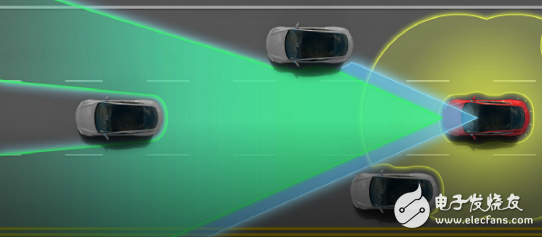
Musk promises to customers that all vehicles equipped with HW 2 will have all the autopilot capabilities of the old cars equipped with Hardware 1 by the end of 2016. In fact, it took longer. Since the emergency forward braking system of the Model S model is not fully operational, Consumer Reports downgraded the model's rating. Until then, Tesla achieved its initial commitment.
Now, according to relevant information, Tesla is developing its own patented computer chip designed for automatic driving systems. Currently, Tesla uses supercomputers from NVIDIA to provide computing power that meets millions of computations per second.
But Tesla is wary of external suppliers and wants to be as internal as possible to control performance, time and price. And NVIDIA's computer units are not specifically designed for autonomous driving. It is understood that the chips that Tesla is developing will be limited to autonomous driving.
The report shows that Tesla is working with AMD to develop new chips, but AMD CEO Sanjay Jha only revealed that the company is working with several automakers to develop dedicated computer chips.
However, there are signs that the cooperation between AMD and Tesla is real. Jim Keller, who worked at AMD, is now taking over the work of Chirs Lattner. In addition, Tesla hired several other AMD engineers, including director Ganesh Venkataramanan, chief hardware engineer Bill McGee, and system circuit design director Dan Bailey.
Elon previously announced that at the end of 2017, a Model S model car will depart from Los Angeles and drive to New York without human intervention. In other words, the 50 employees assigned to the Autopilot project will not have much time to spend with their families.
According to another news, Tesla has developed a new version of the hardware suite - Hardware 2.5. This is contrary to the commitment of Musk last year. Musk has said that once the supervision and software are in line with the system, a car equipped with HW 2 will have all the sensors needed to achieve full autopilot.
When asked about the new hardware configuration, a Tesla spokesperson said: "The HW 2.5 mentioned inside the company is actually a bit exaggerated. The name should be called HW 2.1. This hardware package adds some calculation and wiring redundancy, slightly Improved reliability, but no new Pascal GPUs have been added."
The spokesperson also said that if the new configuration proves to be better in the actual test, the car equipped with HW 2 will be upgraded free of charge. One of Tesla's strengths is to continually improve the car and integrate these improvements into the product as quickly as possible, rather than waiting for the release of new models every year like traditional car manufacturers.
It seems that Elon Musk is still giving consumers high expectations. In theory, this is exactly the opposite of a successful company's creed. But he can always achieve it, and those who have confidence in him will always get the safest and most creative car return.
Filled with these great plans, it seems that it is not important for Tesla to set up factories across the country this year or next year. Most importantly, Tesla will be the first car manufacturer to do this. Everyone knows the name of the first person to walk on the moon. But very few people know the second person. Elon Musk understands this truth.
Antenk DIN41612 Connectors are a versatile two piece PCB connector set with feaures useful for many applications including connections for plug-in card and back-panel wiring, PCB to PCB attachment and peripheral connections for external interfaces. Features include a multitude of body sizes and styles with options that include selective contact loading, make and break contacts, contact lead length choices and contact plating variations each in .100" [2.54mm] or .200" [5.08mm] centerline spacing.
The DIN 41612 standard covers a series of two-piece backplane connectors widely used in rack-based telecommunication, computing, process control, medical, industrial automation, test and measurement and military/aerospace systems where long-term reliability is required. They consist of one to three rows of contacts in combinations of 16, 32, 48, 64, or 96 contacts on a 0.1-inch (2.54 mm) grid pitch. The 3 rows are labelled a, b and c and connectors up to 64 way if using a 96 way body can use either rows a+b or a+c. DIN 41612 Signal connectors can be rated to 1.5 amps per signal pin, at 500 volts, although these figures may be de-rated according to safety requirements or environmental conditions. Several hybrid power and coaxial configurations are available that can handle up to 5.6A or even 15A. This wealth of variations explains the very wide range of applications that they`re put to. For over 30 years these DIN 41612 `Euro Card` connectors to IEC 60603-2 have offered a highly reliable system for board interconnects. Precision contact density, low mating forces, a two piece protective design and many contact termination styles offer unlimited design opportunities. Termination methods include – straight PC, solder eyelet, wire wrap, crimp and [press fit" terminals. Insertion and removal force are controlled, and three durability grades are available. Standardisation of the connectors is a prerequisite for open systems, where users expect components from different suppliers to operate together; ept and Conec DIN 41612 are therefore fully intermateable with all other similarly compliant products from other manufacturers like Harting, Erni, Hirose and TE Connectivity, etc.
The most common connector in the DIN product line is type C, which is widely used in VMEbus systems, the DIN 41612 standard has been upgraded to meet international standards IEC 60603-2 and EN 60603-2. In the past, ept used a comb supported press-fit tool for their type C and B press-fit female connectors. To be more competitive, ept has changed to flat-rock technology (just a flat piece of steel pushed on the top of the connector) as used by many other manufacturers.
DIN 41612 Connectors are widely used in rack-based electrical systems. The standard performance of these connectors is a 2 A per pin current carrying capacity and 500 V working voltage. Both figures may be variable due to safety and environmental conditions.
Types
Number of contacts varies
Many variations of housing material, including different types of metal and plastic
Both angled and straight versions
Male and female
C,R,B,Q Type DIN41612 Connectors
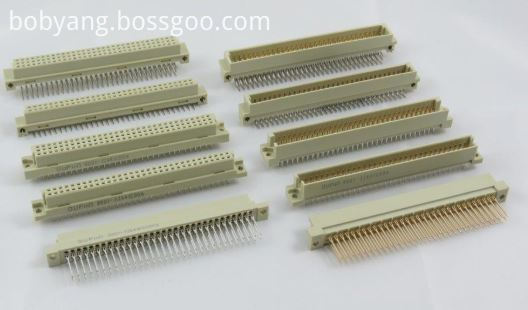
Half C, R, B & Q Type DIN41612 Connectors
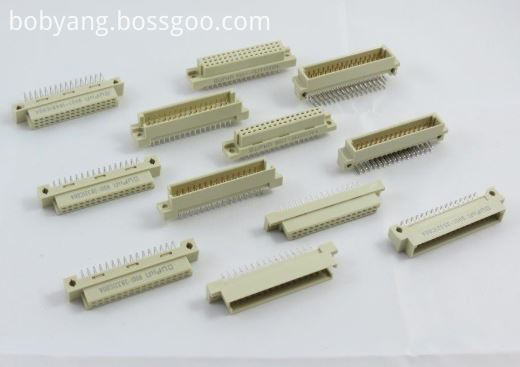
1/3 C,R, B & Q Type DIN41612 Connectors
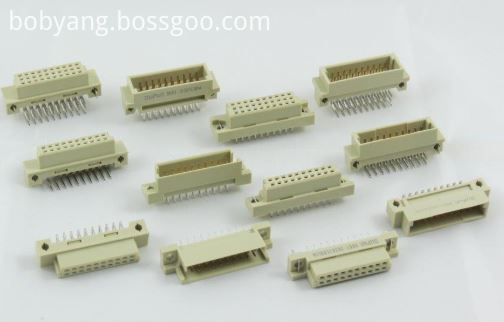
H, F, H+F & M type DIN41612 Connectors
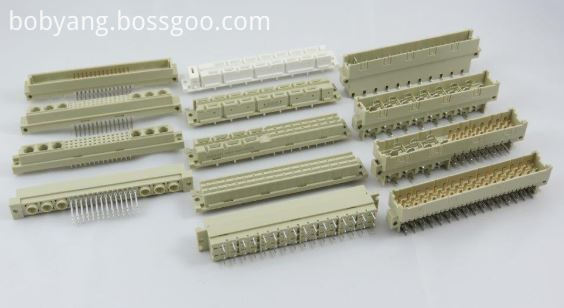
IDC Type DIN41612 Connectors
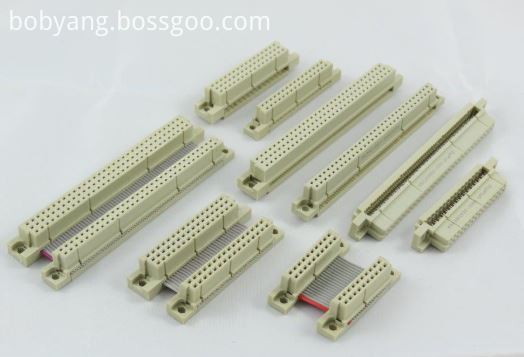
Female Cable Connector
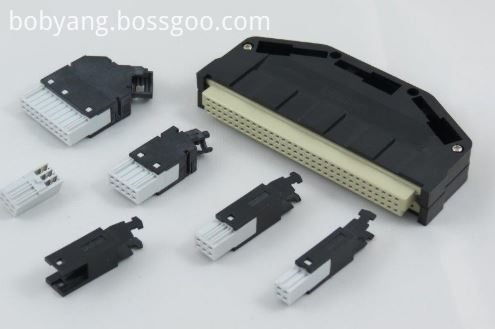
High Pin Count DIN41612 Connectors
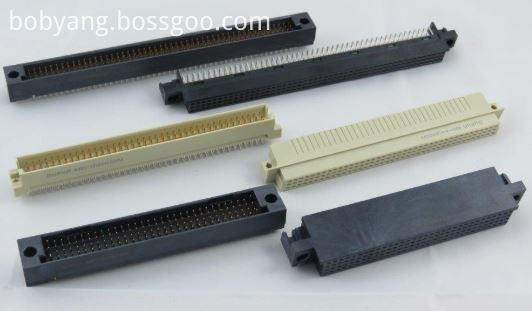
Shroud DIN41612 Connectors
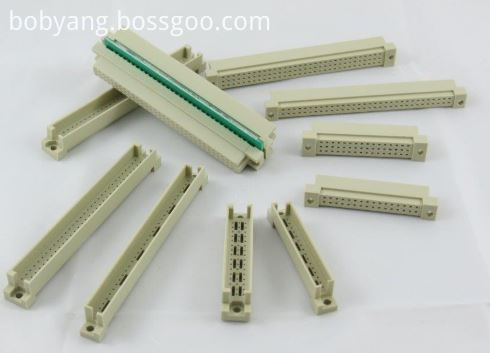
Features and Benefits of Din41612 Connector:
• Indirect mating (male/female)
• Automated production processes
• Continuous quality assurance
• 3-160 contacts
• Complete interconnection system
• Numerous interface connectors
• A wide variety of hoods
• Many termination technologies provide for the lowest installed cost
• Contacts selectively gold-plated
• Tinned terminations for increased solderability
Uses
The primary use of DIN 41612 connectors are PCB Connectors and motherboards, the main acceptance would be their board to board reliable connections.
Applications of Din41612 Connector:
Applications
• Data centers
• Storage
• Servers
• Base stations
• Telecommunications equipment
• Backplane and motherboard assemblies
• Switching systems
• Modular rack systems
• Power automation
• Distributed control systems in
industrial control
• Programmable logic controllers (PLC)
• Robotics
• Test and lab equipment
• Energy distribution
• Monitoring equipment
This is not a definitive list of applications for this product. It represents some of the more common uses.
Din41612 Connector,Din 41612,Eurocard Connector Din41612,Male Din41612 Connector
ShenZhen Antenk Electronics Co,Ltd , https://www.antenkconn.com